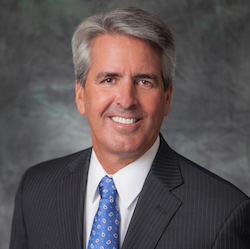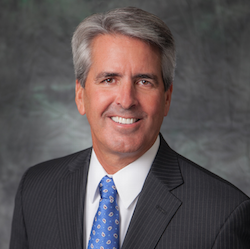The Urban Institute recently published an article about FHLB (Federal Home Loan Bank) membership. In their review, they state how nonbanks align with the FHLB mission, but also focus in on a lack of oversight and the challenge to safely collateralize advances as impediments.
The Urban Institute paper discusses things that could be done to perhaps mitigate some of the concerns, but falls short on specifics, leaving a hole for other stakeholders to fill.

Guest Author
As a fan of the work from the Urban Institute, I worry that, in this case, there is a potential lack of understanding about nonbank oversight, some of which is reflected in this article, and what nonbank inclusion might bring to the system. In short, the perspective of oversight is somewhat misunderstood.
Additionally, a point not included in the Urban Institute paper relates to the current discussion of GSEs and reform by considering how leveraging the FHLB system might help America’s housing finance system. FHLB membership for nonbanks could bring greater taxpayer protection, improved value to the FHLB institutions’ execution, but also mitigate some of the concentration risk in the government-backed mortgage sector, and thus, reduce systemic risk over time.
A few points need flushing out by stakeholders:
First, there is a misunderstanding about the extent and depth of oversight. Nonbanks must adhere to investor guidelines, which include the regulatory requirements overseeing those counterparties. For example, nonbanks that sell to Fannie and Freddie are indirectly overseen by FHFA — the same regulator that oversees the FHLBs. Since the regulator’s primary focus is safety and soundness, the standards set by the GSEs should ostensibly meet required standards as required by their regulator.
Second, nonbanks have a vast, wide web of oversight starting with the state regulators from each respective state where they operate, to warehouse lenders, broker-dealers, mortgage investors overseen by government agencies, private investors, the CFPB, servicing buyers, subservicers, and more. Nonbanks have more oversight, in terms of the sheer volume of institutional counterparties, than most banks. The key is to understand what is missing from this oversight.
Third, the question of properly collateralized liquidity has a variety of solutions which include Urban Institute’s suggestion of considering MSRs as one potential vehicle. Haircuts, reserves, and more can augment the safety net on any collateralized advance.
But given the current focus on IMBs, it needs to be made clear that there are other ways nonbanks could engage with the FHLBs, including selling into the whole loan execution platforms that include the MPP and MPF programs. These programs have experienced varied success over time. Adding more volume potential to the program might improve liquidity and execution and potentially help distribute the concentrated risk of the GSEs to a broader set of players over time that would include the FHLBs.
The key here is to make sure regulatory standards, from regulators including FHFA, HUD and OCC, to their supervised entities, meet the safety and soundness requirements needed to protect taxpayers.
Unfortunately, the intervention of COVID-19 has impeded the perspective given the extensive mandate to servicers provided by the CAREs Act, and the somewhat surprising short regulatory response given unforeseen aspects related to the legislation.
These unforeseen risks from the legislation include unanticipated first payment forbearance before technical sale (or insurance in the case of FHA) and a lack of a specific response about repayment plans on GSE loans that directly impacted unforeseen liquidity needs.
As these liquidity and post-settlement delivery fee and product restriction issues were not the results of any credit weakness, nor due to any quality of management at the no banks, the nation’s overall response needs to be isolated. This should be in terms of focusing on response to a pandemic and subsequent actions, versus focusing on any one sector of the market.
This is a critical time for IMBs and other mortgage lenders. While overwhelmed with mortgage volume, the focus on public policy may be foggy. In normal times this may matter less. But with the FHFA and the GSEs going at high speed on their release plan, the proposed capital rule, new seller servicer standards for doing business with the GSEs, and FHLB membership under consideration, it is absolutely critical for lenders to be able to multitask and keep the public policy arena in scope.
Actions matter and timing is just as critical.






